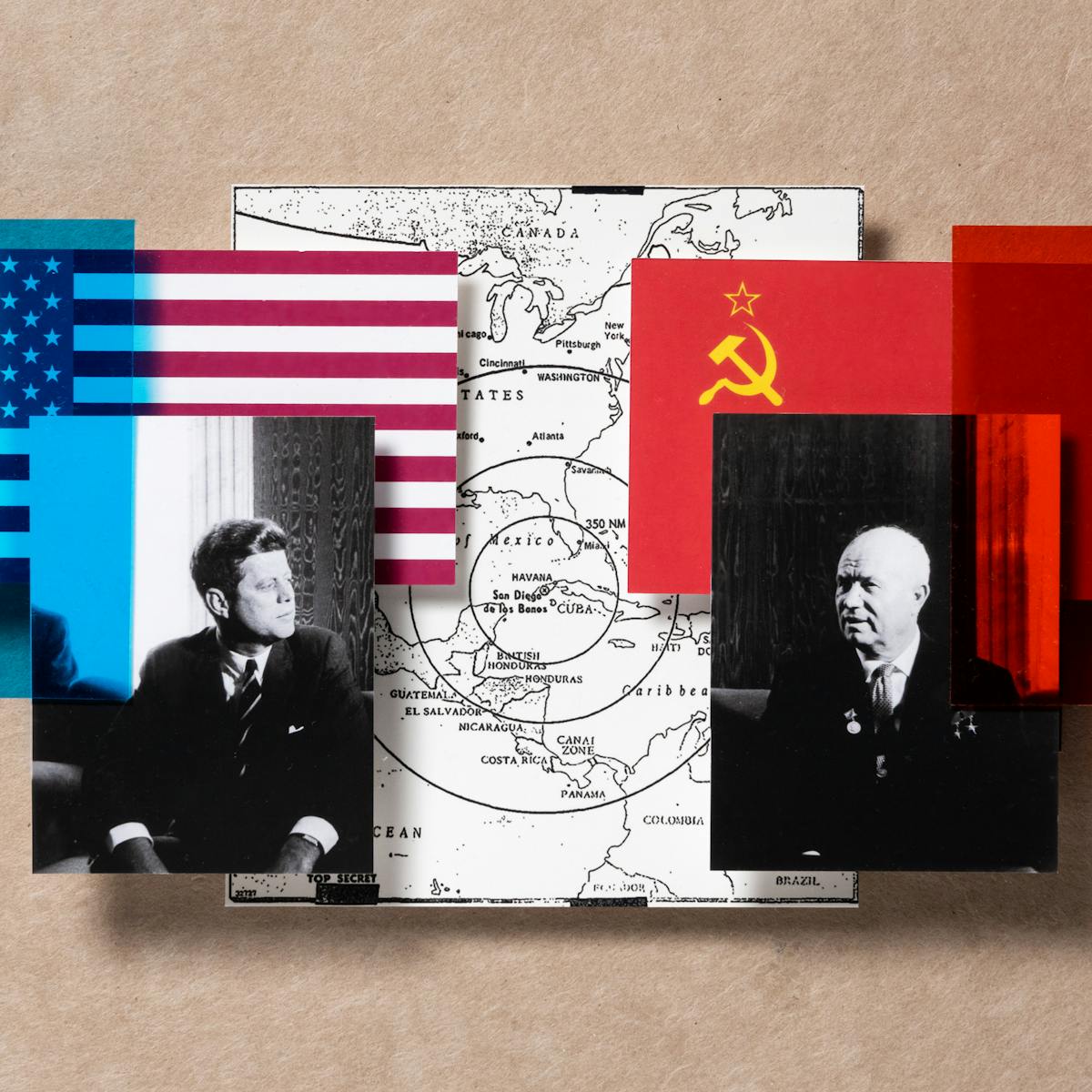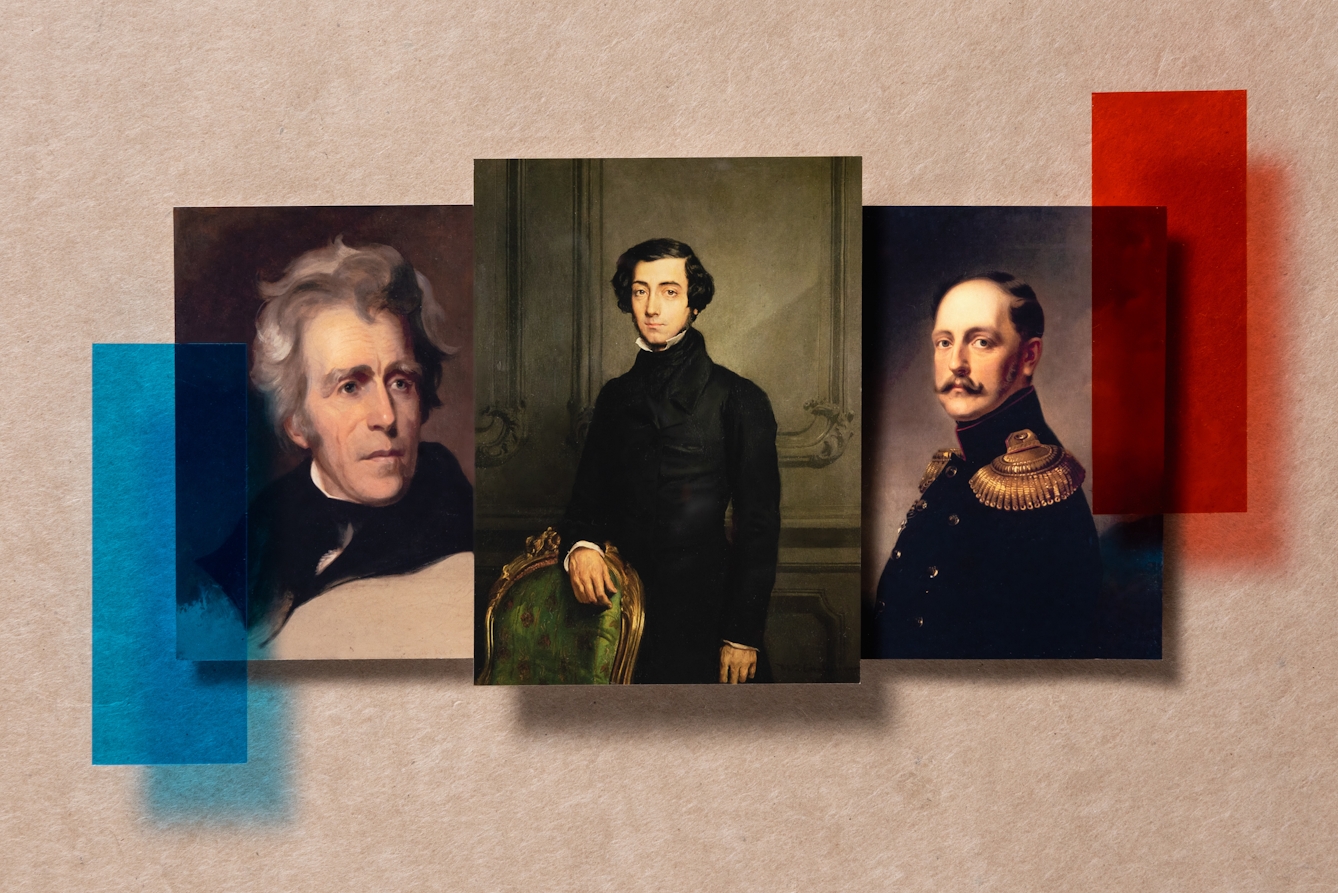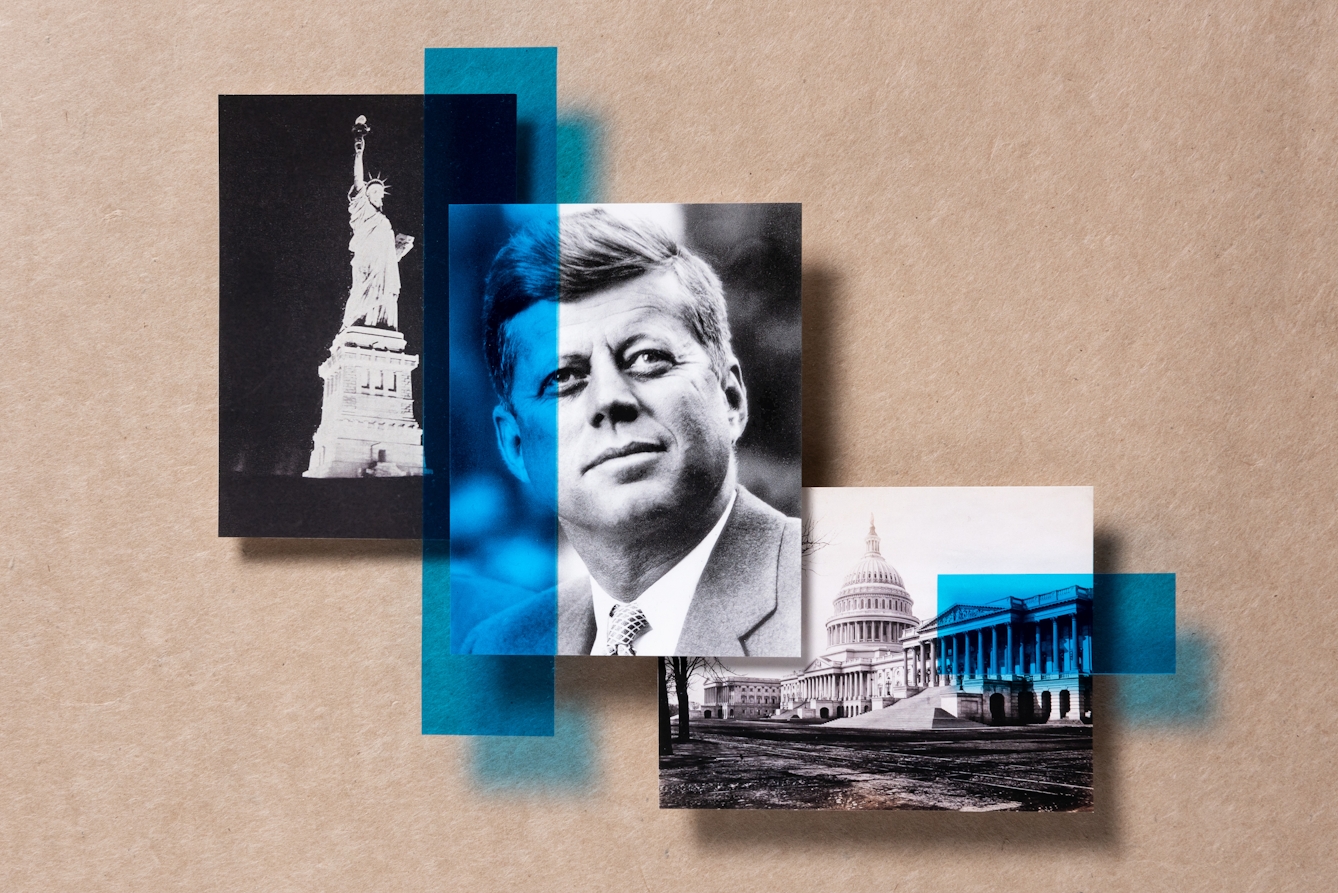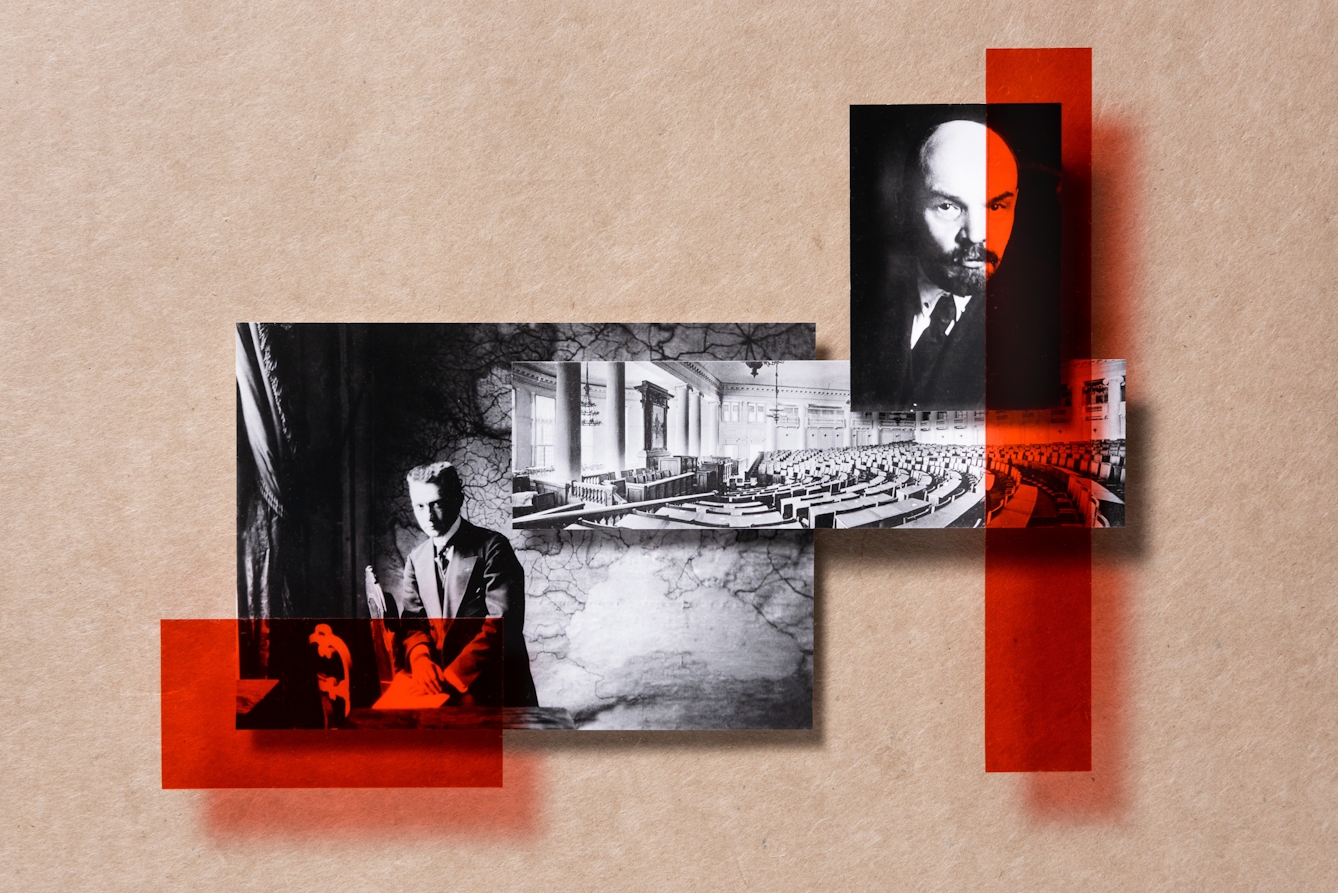Martin Sixsmith’s major new history of the Cold War looks at the decades-long conflict from a psychological perspective. This extract from ‘The War of Nerves’ explores the competing national psyches of Russia and America, and a world divided between their irreconcilable visions of human nature.
Inside the Cold War mind
Words by Martin Sixsmithphotography by Steven Pocockaverage reading time 8 minutes
- Book extract

Long before either the advent of communism or the 20th-century antagonism that pitched them into bitter rivalry, Russia and America were already identified as competing poles of social and spiritual values.
In 1835, the French historian Alexis de Tocqueville predicted with uncanny precision the global dominance the two would achieve. Moscow and Washington seemed content to plough their non-intersecting furrows, but de Tocqueville foresaw a future in which the world would be divided between their irreconcilable visions of human nature.
“The Anglo-American relies upon personal interest to accomplish his ends, and gives free scope to the unguided exertions and common sense of the citizens; the Russian centres all the authority of society in a single arm: the principal instrument of the former is freedom; of the latter servitude.”
That distinction between the individual and the collective sits at the heart of the values America and Russia would come to represent.
That distinction between the individual and the collective sits at the heart of the values America and Russia would come to represent. It would condition their beliefs, their motivation and their national character. It would define how they viewed themselves, and each other – and in each, it would foster the messianic drive to prove that their way was best.
Power and liberty
For a millennium, Russia has been an autocracy, with power concentrated in the hands of an all-powerful leader or leadership group. Strong centralised rule has held together a disparate, centripetal empire and preserved it from the predations of powerful foreign enemies. Sporadic attempts at democracy have ended in a return to the same default mode of governance; the cause of the state has taken priority over the interests of the individual.

“In 1835, the French historian Alexis de Tocqueville predicted with uncanny precision the global dominance that America and Russia would achieve.”
In the 21st century, Vladimir Putin sits at the head of what he terms a “power vertical”, governing from the top, appointing figures loyal to the state to key positions where they implement policy decisions. The federal centre controls the appointment of regional governors, judges and security chiefs. The president’s friends run the major state industries, enriching themselves and him. Putin refers to it as “managed democracy” – under the communists it was called “democratic centralism” – but it began in the time of Ivan the Terrible.
In the 16th century, Russia was a capricious autocracy, with the tsar at the top, the people at the bottom and few civic institutions to mediate power between them. Corrupt, often uneducated placemen appointed through personal connections wielded unchecked authority over justice, taxes and daily life.
The system of kormlenie – literally ‘feeding’ – saw a succession of tsars give their favourites responsibility for administering a geographical region or a sector of the economy. The appointee would receive no salary, but would have the right to enrich himself from the cash flow his activities generated. It was a licence to fleece the people. It brought great loyalty from those the tsar had appointed and great power for the monarch, who held their fate in his hands.
The United States, since 1776, has been a democracy, with moderating institutions, checks and balances and a division of powers that enshrine the right of the people to oversight and control of their elected representatives. The state has foregone absolute power and freed the individual to exercise his or her initiative in the pursuit of private gain and happiness.
At times in America, too, governors, sheriffs, city mayors, local and national officials have abused their powers for personal gain. But graft has never been endemic in the fabric of national government.
Because the state does not enjoy absolute political power, neither does it enjoy economic impunity. The years since 1776 have been characterised by a devotion to the notion of liberty, implanted first by a rejection of the civic curtailments enforced by Britain, then maintained by a population wary of a return to tyranny.
The concept of liberty in the US has been based on the protection of natural rights, presumed to be inherent in the nature of man.

“The United States, since 1776, has been a democracy. The state has foregone absolute power and freed the individual to exercise his or her initiative in the pursuit of private gain and happiness.”
The concept of liberty in the US has been based on the protection of natural rights, presumed to be inherent in the nature of man. It has offered guarantees for the self-governance of local communities, protected economic autonomy, defined social justice and underpinned moral freedoms in areas of personal conscience.
There have been challenges. Anti-federalist campaigners contended that freedoms were best preserved at local level or at the level of individual states, rather than by national government. The dispute played a role in the outbreak of civil war; slavery was a stain on the lofty ideals of the young nation. It surfaced in continuing opposition to “big government” and surprising (at least, to European eyes) anger about federal initiatives such as Barack Obama’s plan for national healthcare.
At all times, liberty was at the heart of the debate and at least some of the people had a say in it. Citizens neither laid down nor were pressured to lay down their individual rights to the collective cause of the state.
Political views of human nature
Unlike America, Russian lands were vulnerable, not shielded by protecting oceans, open on all sides to hostile forces: from the 12th century, fierce nomadic tribes in the southern steppes had been raiding Kievan Rus’ (the medieval forerunner to what would become the Russian state) to pillage, murder and kidnap. The wild, dangerous steppe and the dark forces contained within it became an enduring terror myth in the national psyche.
This conviction that Russia is vulnerable helps explain behaviour that can seem strange to the West – the readiness to sacrifice the individual, the subjugation of personal interests to the good of the whole, the collectivist ethos that enshrines the state as the supreme national priority. It’s seen in the unflinching expenditure of Russian lives in battle, the aggressiveness of a military stance that flows from the certainty of national weakness, and the widespread acceptance that the state has the absolute right to murder its enemies abroad.
When the Kremlin suppresses dissenting voices, jails opposition candidates and closes critical media outlets, the outcry within the country is minimal. Independent polls show that the majority of Russians support Vladimir Putin because they buy into the millennial credo that only a powerful state can guarantee order at home and protection from hostile outside forces.

“This conviction that Russia is vulnerable helps explain behaviour that can seem strange to the West – the readiness to sacrifice the individual… the collectivist ethos that enshrines the state as the supreme national priority.”
The Russian state’s reliance on the readiness of the individual to sacrifice him or herself in the cause of the collective supposed a benevolent view of human nature, in which mankind was held to be cooperative, altruistic, ready to forego selfish aims in furtherance of the common good. This concept was explicitly posited in the years of Soviet communism (though Moscow frequently had to “enforce human goodness”).
The American model, in contrast, held that human nature was innately competitive, programmed to seek the ultimate personal benefit from life. If government were to be truly of the people, by the people and for the people, it would have to accept the reality of human selfishness and harness it for the success of the nation.
Democracy dismissed
Russia was presented with an opportunity to enter the community of democratic nations in early 1917. The provisional government of Alexander Kerensky, which took power after the popular February Revolution, began to introduce Western-style parliamentary reforms, with free elections to a national constituent assembly, a body that was intended to pave the way for a constitution and a parliament based on universal suffrage.
After a largely peaceful election, in which two-thirds of the population voted, the constituent assembly convened in the Tauride Palace in St Petersburg on 5 January 1918. But by then, Kerensky’s government had been forcibly removed by the Bolsheviks’ October coup, and Lenin, whose party had not done well in the elections, wasn’t about to let democratic niceties threaten his hold on power. The Bolshevik deputies walked out after the first votes went against them, then sent soldiers with guns to evict everyone else.
“Everything has turned out for the best,” Lenin wrote afterwards. “The dissolution of the Constituent Assembly means the complete and open repudiation of democracy in favour of dictatorship. This will be a valuable lesson.”
The Russian people’s striving for freedom and self-government in 1917 had delivered them up to a new and even more oppressive despotism that would endure until the collapse of the Soviet Union in 1991. In the course of those 74 years, relations between Moscow and Washington would evolve through tension to crisis to the brink of war.
At the root of it was a conflict between two inimical systems: the American way of individualism and liberty versus the ingrained Russian heritage of collective endeavour and subservience to the state. In the second half of the 20th century, vast swathes of humanity would be forced, cajoled or seduced into conforming to one or the other.
‘The War of Nerves’ is out now.
About the contributors
Martin Sixsmith
Martin Sixsmith studied Russian at Oxford, Harvard, the Sorbonne and in St Petersburg, and psychology at Birkbeck and London Metropolitan University. He witnessed the end of the Cold War first-hand, reporting for the BBC from Moscow during the presidencies of Gorbachev and Yeltsin. He is the author of two novels and several works of non-fiction, including ‘Philomena’ and ‘Russia: A 1,000 Year Chronicle of the Wild East’.
Steven Pocock
Steven is a photographer at Wellcome. His photography takes inspiration from the museum’s rich and varied collections. He enjoys collaborating on creative projects and taking them to imaginative places.

